When you’re lifting and securing heavy loads, webbing slings are an essential tool.
Made from durable synthetic materials like polyester and nylon, these slings offer flexibility and strength.
Several types of webbing slings are available, each designed for specific lifting needs.
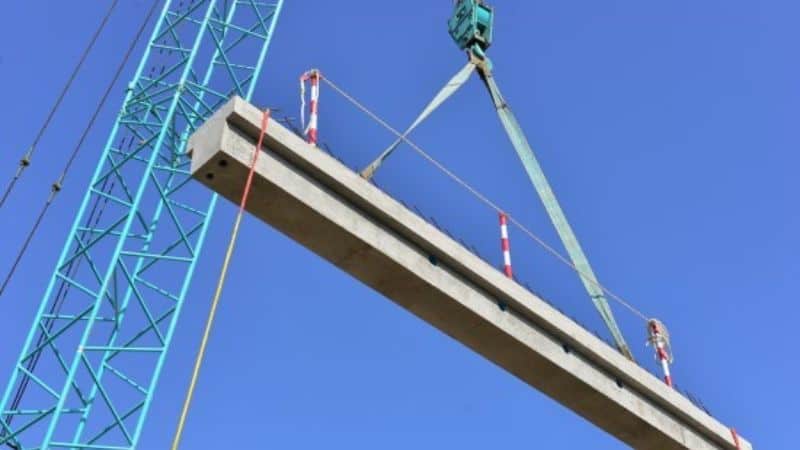
By understanding the different types of webbing slings, you can choose the best one for your specific lifting tasks.
specific lifting tasks.
Fundamentals of Webbing Slings
Webbing slings are essential tools for lifting and securing heavy loads.
They are made from high-strength synthetic materials and come in various shapes and designs. Understanding their types, materials and capabilities is crucial.
Types of Webbing Slings
There are several main types of webbing slings, each designed for specific lifting applications:
Eye and Eye Webbing Slings
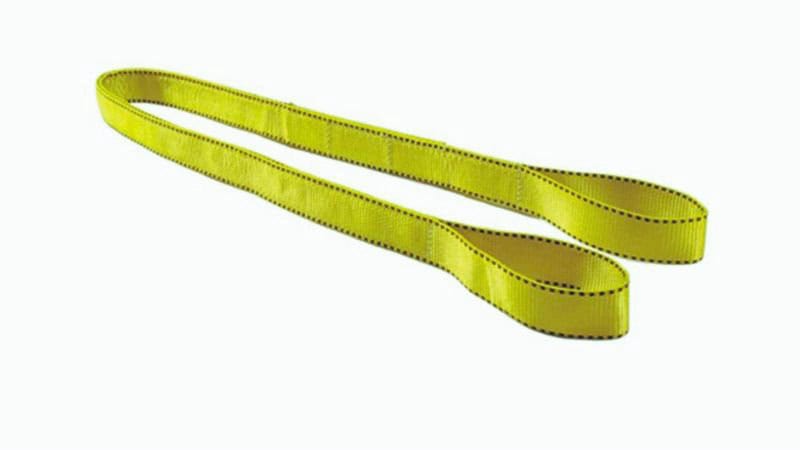
Eye and eye webbing slings are one of the most common and versatile types of webbing slings. These slings feature an eye-shaped loop at each end, making them flexible and lightweight. Their design allows for easy use in various configurations, including choker, basket, or vertical hitches.
Key features of eye and eye webbing slings:
- Versatile and easy to use
- Suitable for delicate loads
- Minimize risk of damage, dents, or scratches during lifting
- Can be used in choker, basket, or vertical configurations
Endless (Infinite Loop) Webbing Slings
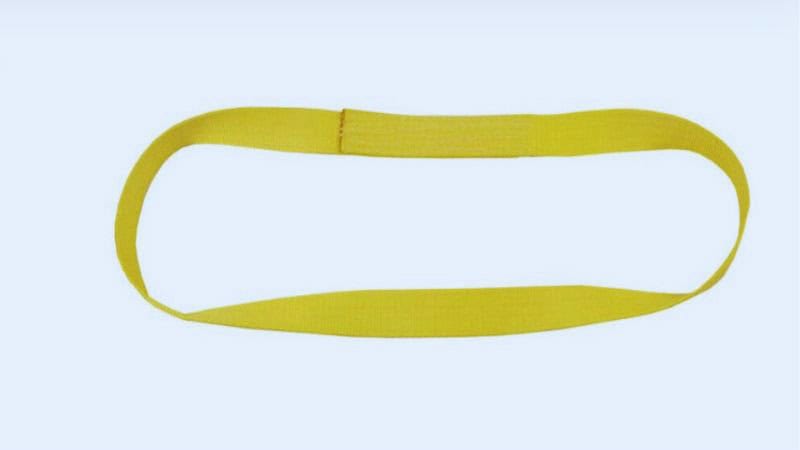
Endless webbing slings, also known as infinite loop slings, are continuous loops of webbing without distinct end points. These slings offer several advantages:
- Can be used in all three types of sling hitches (vertical, choker, and basket)
- Allow rotation throughout their service life to minimize wear
- Avoid repetitive use damage by distributing stress across the entire sling
Return Eye Webbing Slings
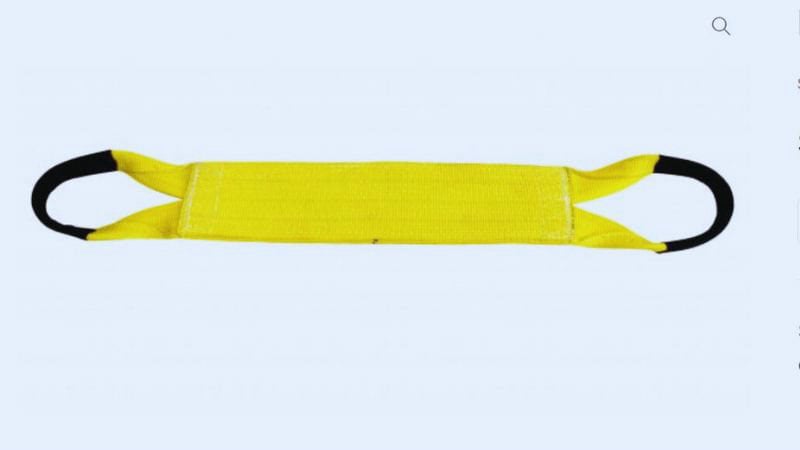
Return eye web slings are heavy-duty webbing slings designed for versatile and durable lifting applications.
The slings have eyes that stand open at a 90-degree angle to the sling body. This unique design prevents twisting of the eye or sling body when used in basket or choker hitches.
These slings are made with multiple webbing widths sewn edge-to-edge and covered with wear pads for extra abrasion protection. This configuration allows users to reverse the eyes, effectively doubling the service life of the lifting strap.
Materials of Webbing Slings
Different types of webbing slings have unique features:
- Nylon Slings: Good for general use, these slings are elastic, providing some give under load.
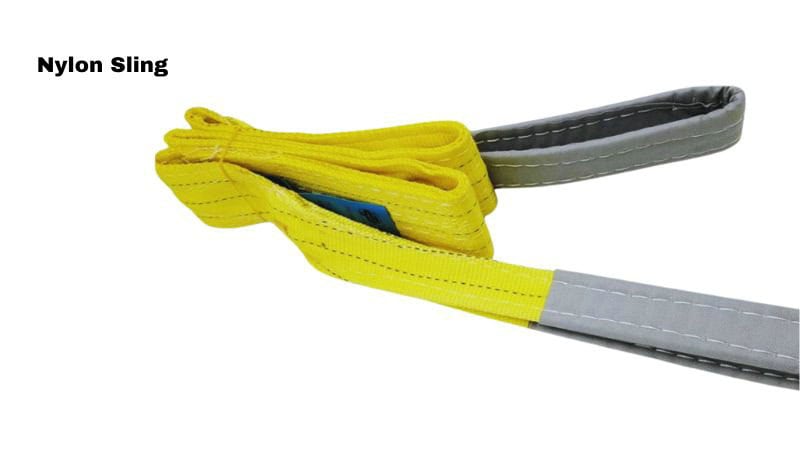
- Polyester Slings: Offer less stretch than nylon, providing more control and stability. Suitable for environments with acids or bleaching agents but not for strong alkali exposure.

- Chain Slings: Strong and durable, ideal for heavy and hot loads but are heavier and less flexible.
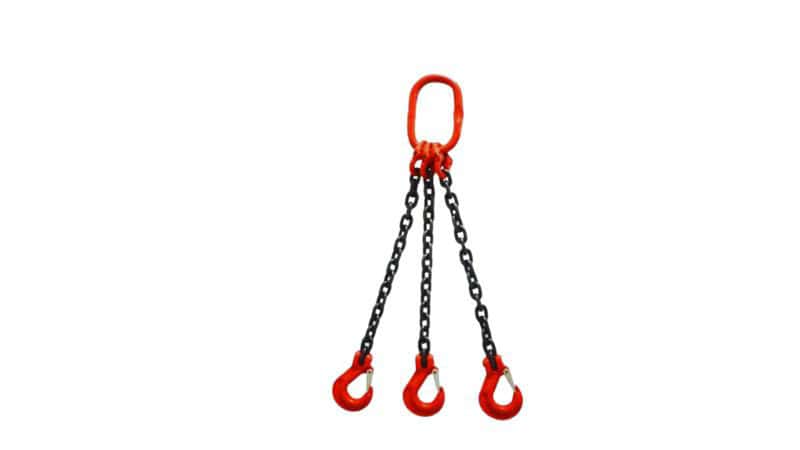
- Wire Rope Slings: Offer high strength and are good for rough environments but can be less flexible.

- Metal Mesh Slings: Excellent for load balance and control, especially with sharp edges, but are heavier and more costly.
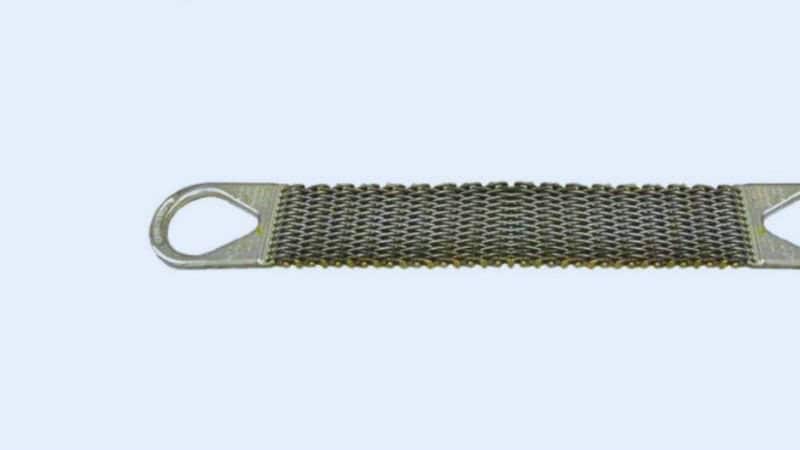
Specifications and Capabilities
Each webbing sling comes with specifications such as rated capacity and working load limit (WLL).
These specifications indicate the maximum weight the sling can safely handle. The load-bearing capacity and breaking strength are critical for safe operations.
Always check the sling’s label for its capacity and ensure it matches your lifting requirements.
Never twist or knot the slings, as this can reduce their strength. Regular inspection is also necessary to ensure the sling remains in good condition and performs safely.
Choosing the Right Webbing Sling
Selecting the correct webbing sling for your lifting needs is crucial for safety and efficiency.
Focus on the specific requirements of your lifting operation, the types of webbing slings available, and how they interact with your equipment.
Selecting the correct webbing sling for your lifting needs is crucial for safety and efficiency.
Focus on the specific requirements of your lifting operation, the types of webbing slings available, and how they interact with your equipment.
Considerations for Selection
Before choosing a webbing sling, it’s important to look at several factors:
- Weight of the load: Ensure the sling can handle the load’s weight without exceeding its working load limit.
- Load balance: Consider the center of gravity and proper slinging configuration.
- Material characteristics: Assess the load’s shape, sharp edges, and surface to decide on the best sling material.
- Durability: Examine the sling’s lifespan and resistance to chemical exposure or extreme temperatures.
Compatibility with Lifting Equipment
The compatibility between webbing slings and lifting equipment is essential:
- Fittings: Use appropriate fittings like triangle fittings to ensure stable connections.
- Length and Width: Match the sling’s dimensions to the load and lifting setup to avoid overloading.
- Flexibility: Ensure the sling can maneuver around the load’s shape without compromising stability or safety.
- Fabrication Efficiency: Choose slings that provide ease of use and efficiency in attaching and detaching from the load.
